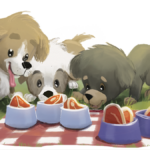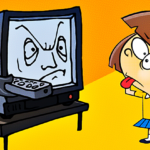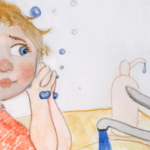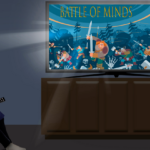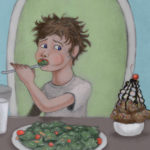A new Hungry Mutt children's book tells the story of a carefree pup named Bella who gets lost in the woods, led astray by her best friend and ends up with the Dogvid virus. Happily, her brothers help her discover that while bad things do happen, chances are that if you stick together, all will be well. The 35-page picture book, Sticking Together: A Dog's Tale, has … [Read more...] about A New Heartwarming Children’s Book About Sticking Together
Mutt News
Quality Family Time Cheat Codes vs. TV, Phones & Games
When a screen hands you a remote, sometimes quality family time requires you to just thumb your nose. Yes, we realize that cutting off screen time can be a revolutionary act -- and might result in near mutiny on the path to quality family time. But hey, isn't that a sign that it needs to be done? Let’s set aside other compelling reasons for doing so, like Internet … [Read more...] about Quality Family Time Cheat Codes vs. TV, Phones & Games
Children’s Picture Book Author On Helping Kids During COVID-19
A rhythmic three-line story pattern could help children cope in the time of the coronavirus, said Linda Cooper, author of the children’s picture book, I Don’t. I Don’t. I Do! The picture book aims to teach children a timeless truth: That often you first have to do what you don’t want to do so that you can then do what you do want to do. This approach can be easily … [Read more...] about Children’s Picture Book Author On Helping Kids During COVID-19
Onscreen Media Violence in the Battle for Children’s Minds
Raising kids in a violent world is difficult. Raising them in a high tech world where virtual violence is pandemic is not only difficult, but increasingly complicated. Just what are parents up against, and what can they do about it? The American Academy of Family Physicians (AAFP) says that a growing body of research shows a strong association between the perpetration of … [Read more...] about Onscreen Media Violence in the Battle for Children’s Minds
I Don’t. I Don’t. I Do! Offers Kids A Bedtime Story Wrapped In A Timeless Truth
What children often have difficulty grasping is that they sometimes have to do what they don’t like — before they can do what they do like. This little secret is illuminated in I Don’t. I Don’t. I Do!, the first illustrated children's ebook from Hungry Mutt productions. The picture book, available on Amazon Kindle and Apple Books, was written by former … [Read more...] about I Don’t. I Don’t. I Do! Offers Kids A Bedtime Story Wrapped In A Timeless Truth

